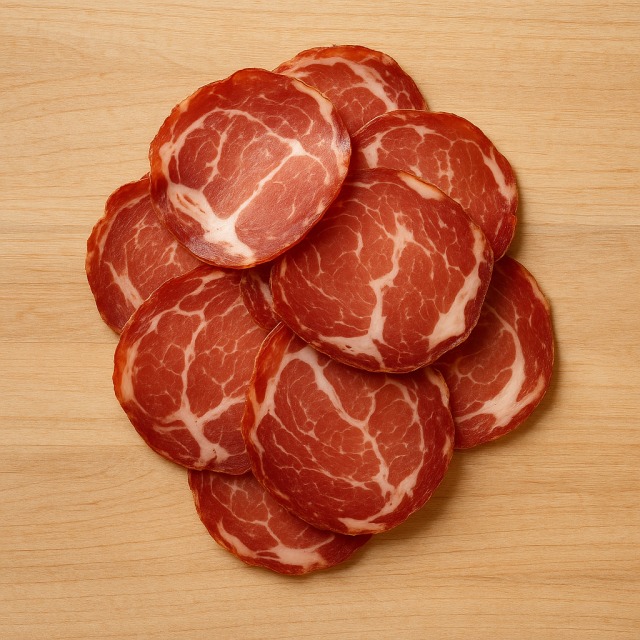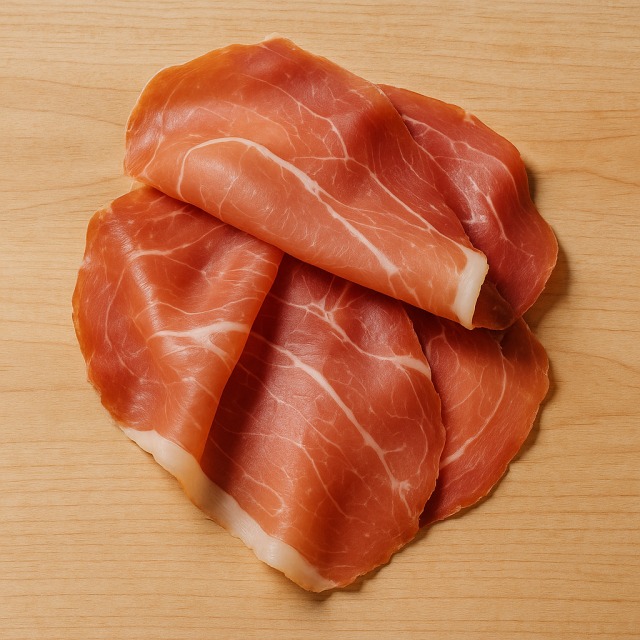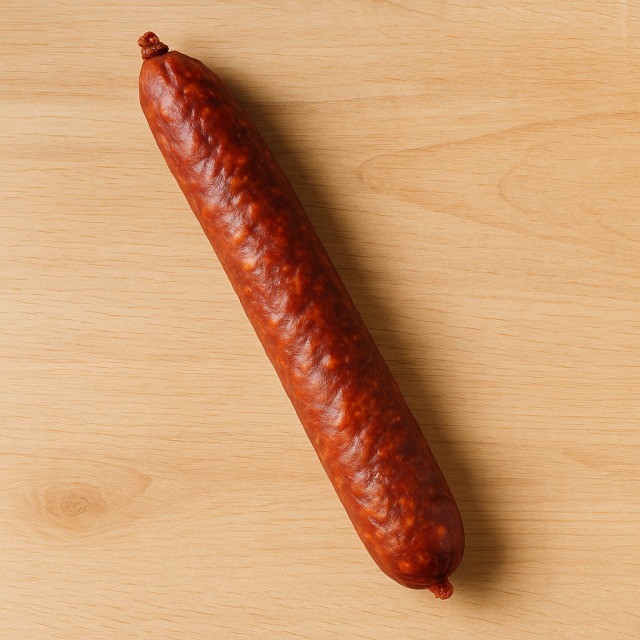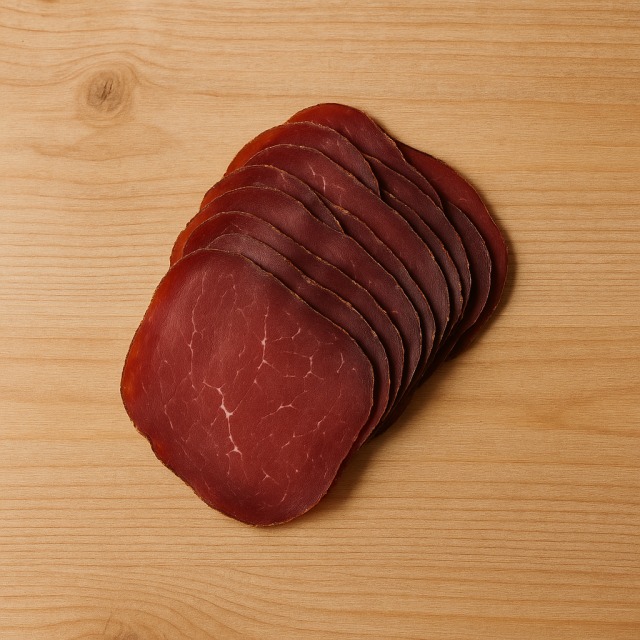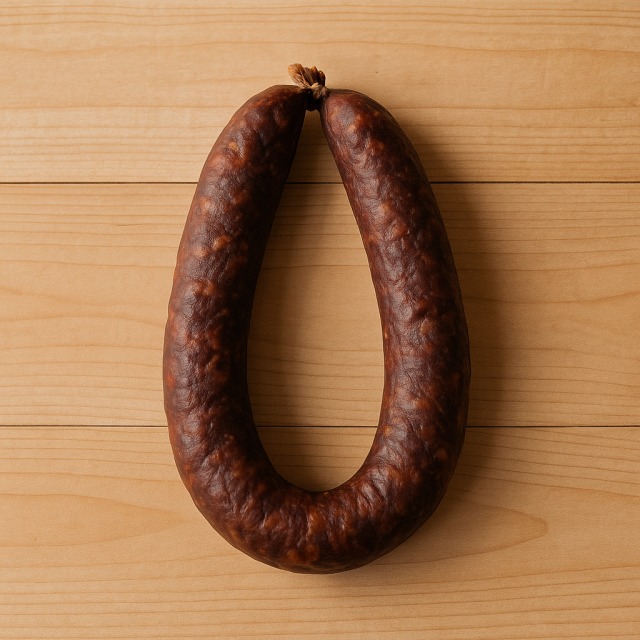Calorie Chart / Meat & Eggs / Smoked bacon
How Many Calories Are in Smoked bacon?
Calculation of the nutritional value & Recommended Dietary Intake of smoked bacon
For g and a calorie requirement of kcal
| Calories 13 kcal | Proteins 2.3 g | Lipids 0.4 g | Carbohydrates 0 g |
| 1% | 3% | 1% | 0% |
Health benefits of smoked bacon

Smoked bacon - 100g
Calories 132 kcal
Proteins 23 g
Lipids 4.3 g
Carbohydrates 0.4 g
Smoked bacon is considered a moderate-calorie cured meat. Its 23 g of proteins per 100 g provide all the essential amino acids needed for muscle maintenance, while its very low carbohydrate content keeps total calories in check for people who monitor their energy intake.
It supplies several B-group vitamins—especially thiamine (B1), niacin (B3), and cobalamin (B12)—that contribute to normal energy metabolism and help reduce tiredness without adding many extra calories. On the mineral side, phosphorus supports healthy bones, zinc and selenium are important for immune function, and iron assists oxygen transport.
Although bacon is cured, the smoking process also delivers small amounts of antioxidant compounds and choline, a nutrient involved in liver function. Keep in mind the relatively high sodium content and the presence of nitrates; enjoying reasonable portions preserves the nutritional benefits without letting calories or salt add up.
Historically, smoking pork belly was a way to preserve meat through the winter months. Its intense flavour means you can use less product, limiting calories per serving while still obtaining that traditional smoky note in modern dishes.
Tips for incorporating smoked bacon into a balanced diet
Because smoked bacon already brings a strong taste and moderate calories, a 30 g portion is often enough. Try a balanced breakfast of wholemeal toast, a poached egg, avocado slices, and crisp bacon: the fibers and healthy fats slow down digestion and keep calories stable over the morning.
At lunch, sprinkle grilled bacon strips over a spinach and apple salad, completed with walnuts and a light vinaigrette. You obtain contrasting textures, extra micronutrients, and reasonable calories in one bowl.
For dinner, lighten a classic carbonara by replacing part of the cream with light yogurt. The sauce still feels creamy but cuts saturated fat and total calories while keeping proteins high thanks to the bacon and the pasta.
Other ideas: add a few cubes to a vegetable soup made with broccoli, or bake a slimmer Quiche Lorraine using semi-skimmed milk instead of heavy cream. In every case, pairing smoked bacon with plenty of vegetables helps dilute sodium, control calories, and maximise satiety.
Frequently Asked Questions
- How many calories are in smoked bacon?
- Smoked bacon provides 132 kcal per 100 g.
- Is smoked bacon compatible with a low-calorie diet?
- Yes, its moderate 132 kcal per 100 g allow it to fit into a low-calorie plan when you limit the portion to 20–30 g and balance the plate with vegetables.
- How much protein does smoked bacon contain?
- It offers about 23 g of proteins per 100 g, making it a useful protein booster without excessive calories.
- Does pan-frying change the calories?
- Cooking without added fat keeps calories almost identical; however, frying in oil or butter raises the calorie count by the amount of extra fat absorbed.
- Is smoked bacon leaner than regular streaky bacon?
- Yes, this cured cut is trimmed before smoking and shows less fat, explaining its lower calories and only 4.3 g of lipids per 100 g.
- What is a healthy portion size?
- A 30 g serving yields roughly 40 kcal, enough to flavour dishes while keeping calories, sodium, and saturated fat under control.
Similar foods
Information provided by Calorie Menu may contain inaccuracies or errors. It cannot, under any circumstances, substitute medical advice or medication.
